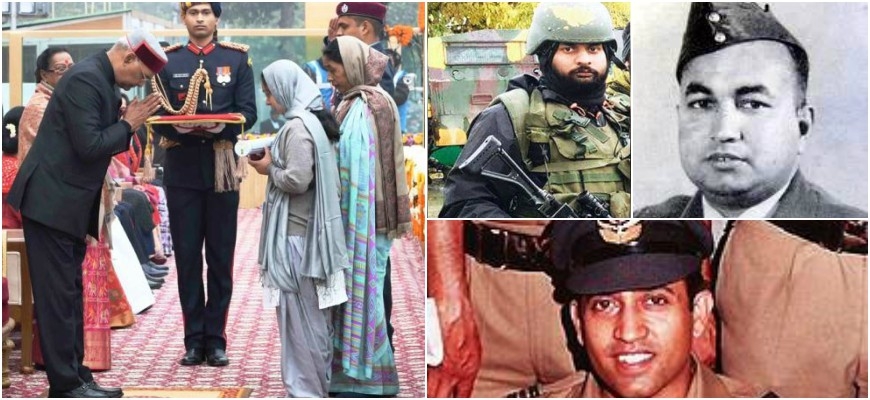Three personnel, three stories, three Ashok Chakras still gives the nation a moment of salute
New Delhi, January 27: Ashok Chakra Award is India's highest peacetime military decoration awarded for valor, courageous action or self-sacrifice away from the battlefield. When this award is honored to any brave heart, the moment makes the environment proud too.
The family of IAF Garud commando Corporal Jyoti Prakash Nirala stood in front of President Ramnath Kovind to receive the Ashok Chakra which made him emotional, bringing tears to his eyes.
Jyoti Prakash Nirala, third airman to receive this award after Suhas Biswas and Rakesh Sharma and the first one who received it for ground combat, is credited for the elimination of the top local leadership of Lakshar-e-Taiba.
President Ramnath Kovind gave this respect to wife and mother of Nirala. Jyoti Prakash was involved in an operation against Lashkar-e-Taiba terrorists on November 18, 2017. Jyoti killed two terrorists in it. These terrorists included the LeT chief and nephew of Zakir Rehman Lakhvi, mastermind of the 26/11 attack. During the encounter, the light flame was fired.
Suhas Biswas was a flight lieutenant in the Indian Air Force who was the first Air Force Officer to be awarded the Ashoka Chakra. In 1952 Biswas was working in a Communication Flight unit in Lucknow. On 3 February 1952, some senior army officials were returning to New Delhi after an official visit. Biswas took charge of their aircraft. After it took off, suddenly a crew member observed an engine malfunction; subsequently, a fire broke out. Biswas first tried to extinguish it, but it was difficult to control. He decided to attempt a forced landing and made a belly landing Sandila village in Uttar Pradesh and successfully saved the lives of all the passengers. Biswas was awarded the Ashoka Chakra for his extraordinary example of bravery, intelligence, and rationality.
Rakesh Sharma, the only Indian Citizen to travel in space, was awarded Ashok Chakra in 1985. On September 20, 1982, he was selected to fly to space as part of a joint venture between the Indian Space Research Organisation (ISRO) and the Soviet Intercosmos space programme. He spent a total of 7 days and 21 hours in space. While he was in space, he practiced the revolutionary 'zero gravity yoga' and also advised astronauts to practice yoga to deal with space sickness. He was conferred with the honor of the Hero of the Soviet Union upon his return from space. The Indian Government conferred its highest peacetime gallantry award, the Ashoka Chakra, on him.